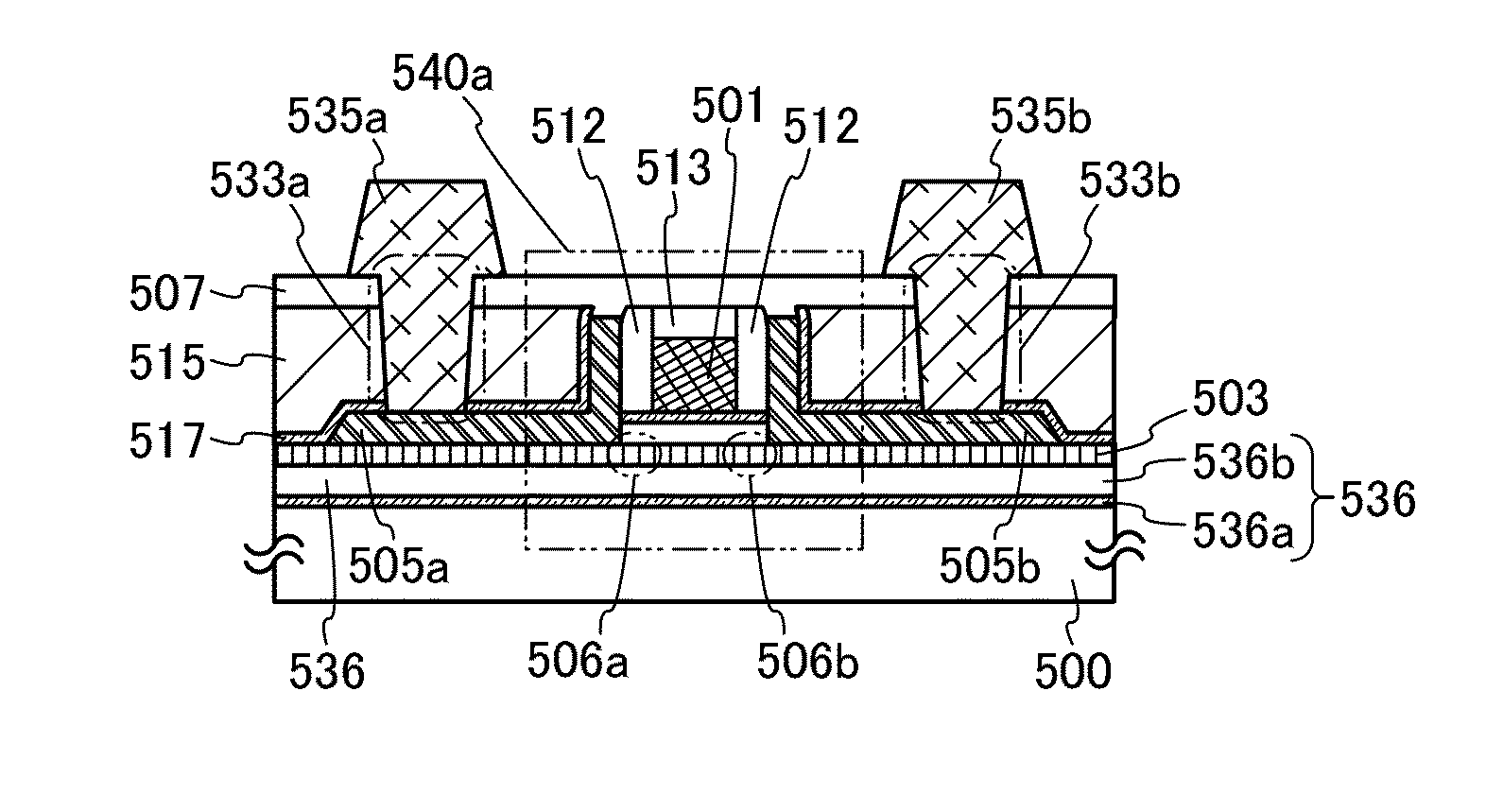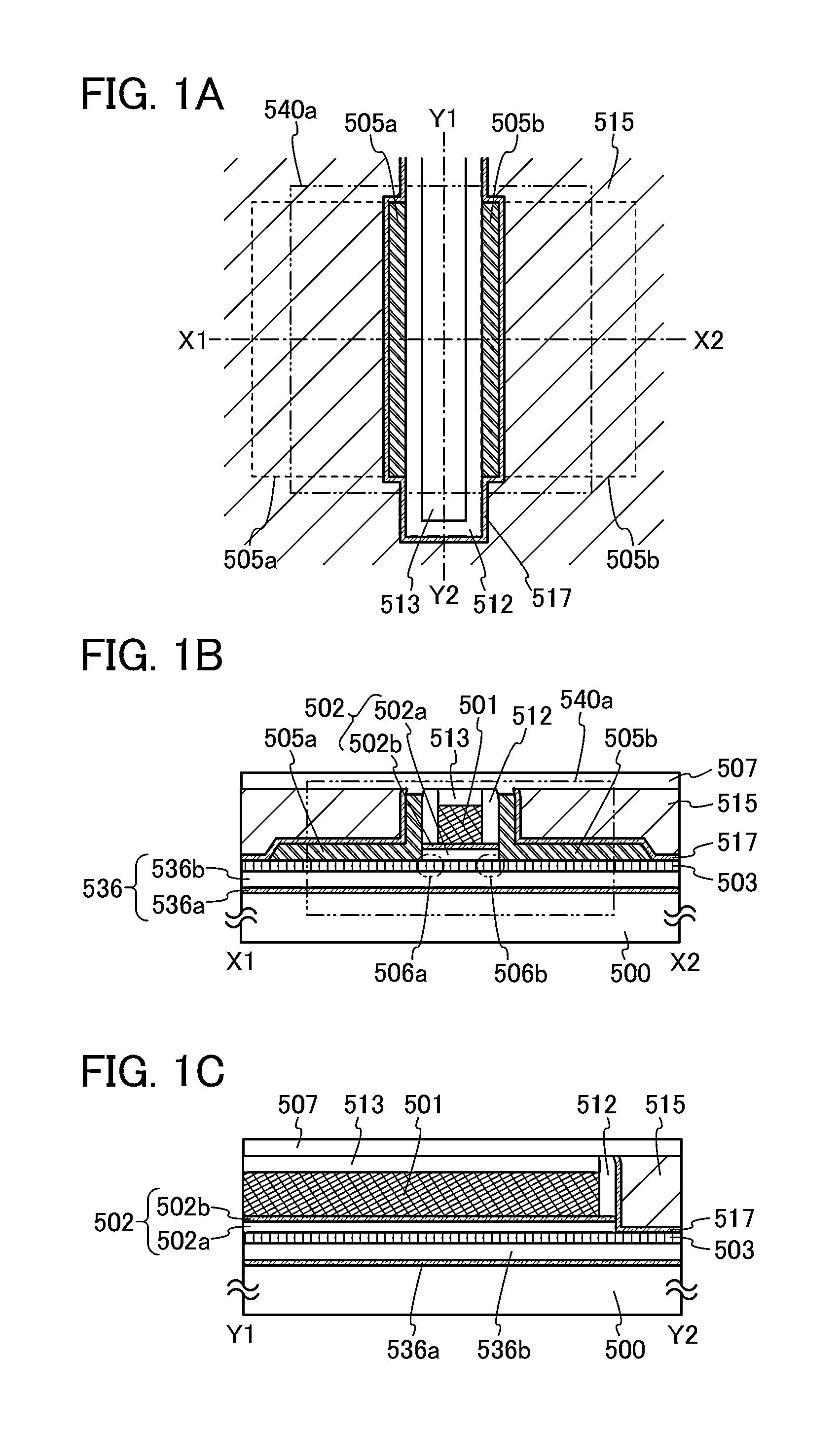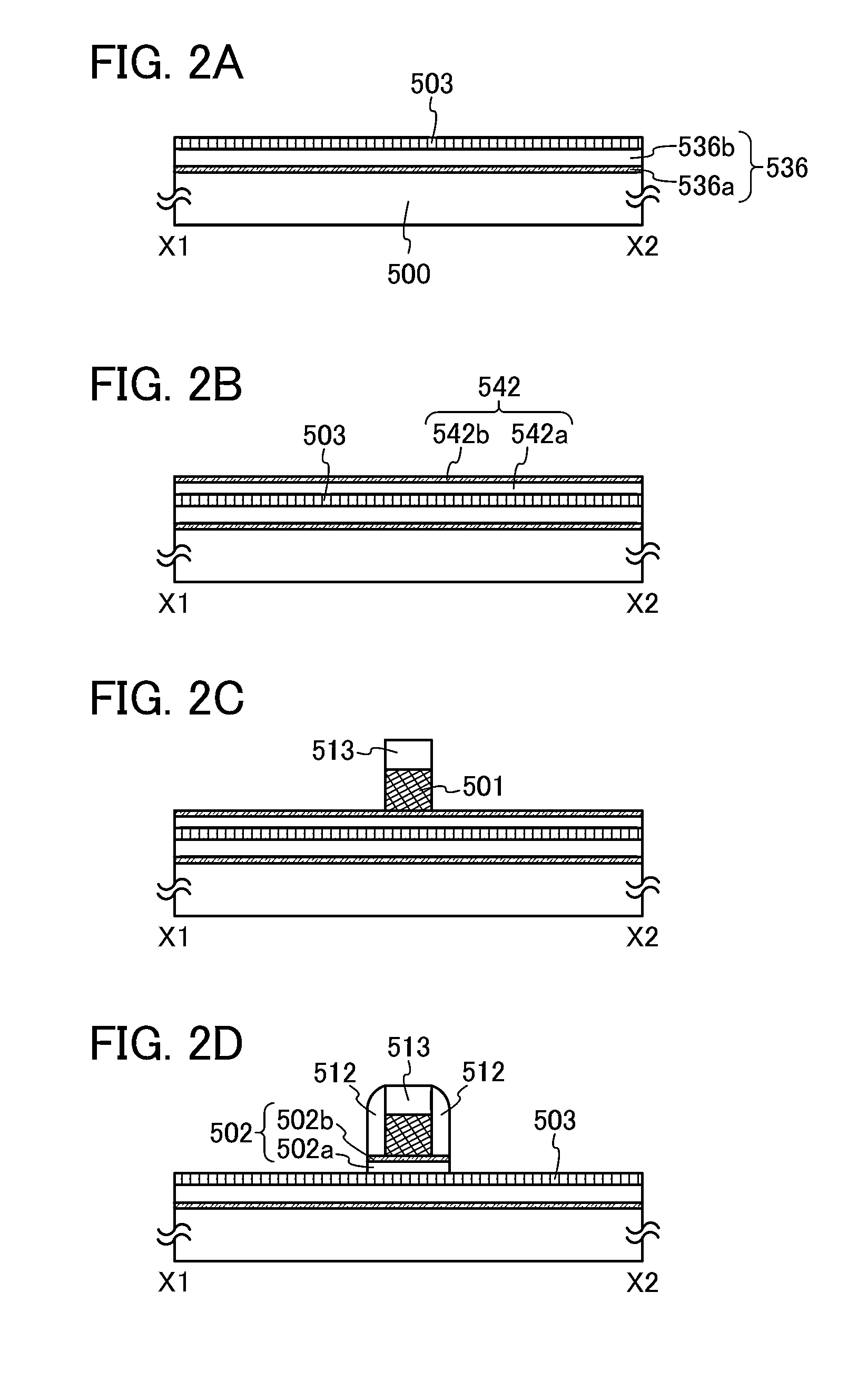Semiconductor device and manufacturing method thereof
- Summary
- Abstract
- Description
- Claims
- Application Information
AI Technical Summary
Benefits of technology
Problems solved by technology
Method used
Image
Examples
embodiment 1
[0162]In this embodiment, one embodiment of a semiconductor device and a method for manufacturing the semiconductor device will be described with reference to FIGS. 1A to 1C. In this embodiment, a transistor including an oxide semiconductor layer is shown as an example of the semiconductor device.
[0163]The transistor may have a single-gate structure in which one channel formation region is formed, a double-gate structure in which two channel formation regions are formed, or a triple-gate structure in which three channel formation regions are formed. Alternatively, the transistor may have a dual gate structure including two gate electrodes positioned over and below a channel region with a gate insulating layer provided therebetween.
[0164]A transistor 540a illustrated in FIGS. 1A to 1C is an example of a top-gate transistor. FIG. 1A is a top view, FIG. 1B is a cross-sectional view along dashed line X1-X2 in FIG. 1A, and FIG. 1C is a cross-sectional view along dashed line Y1-Y2 in FIG....
embodiment 2
[0333]In this embodiment, an example of a semiconductor device which includes the transistor described in this specification, which can hold stored data even when not powered, and which does not have a limitation on the number of write cycles, will be described with reference to drawings.
[0334]FIGS. 5A to 5C illustrate an example of a structure of a semiconductor device. FIG. 5A is a cross-sectional view of the semiconductor device, FIG. 5B is a top view of the semiconductor device, and FIG. 5C is a circuit diagram of the semiconductor device. Here, FIG. 5A corresponds to a cross section along line G1-G2 and line H1-H2 in FIG. 5B. Note that in FIG. 5B, some components of the semiconductor device illustrated in FIG. 5A are omitted for clarity.
[0335]The semiconductor device illustrated in FIGS. 5A and 5B includes a transistor 360 including a first semiconductor material in a lower portion, and a transistor 362 including a second semiconductor material in an upper portion. The transist...
embodiment 3
[0368]In this embodiment, a semiconductor device which includes the transistor described in the above embodiment and has a structure different from the structure described in Embodiment 2 will be described with reference to FIGS. 7A and 7B, FIGS. 8A and 8B, and FIG. 9.
[0369]FIG. 7A illustrates an example of a circuit configuration of a semiconductor device, and FIG. 7B is a conceptual diagram illustrating an example of a semiconductor device. First, the semiconductor device illustrated in FIG. 7A will be described, and then, the semiconductor device illustrated in FIG. 7B will be described.
[0370]In the semiconductor device illustrated in FIG. 7A, a bit line BL is electrically connected to one of a source electrode and a drain electrode of the transistor 362, a word line WL is electrically connected to the gate electrode of the transistor 362, and the other of the source electrode and the drain electrode of the transistor 362 is electrically connected to a first terminal of a capacit...
PUM
 Login to View More
Login to View More Abstract
Description
Claims
Application Information
 Login to View More
Login to View More - R&D
- Intellectual Property
- Life Sciences
- Materials
- Tech Scout
- Unparalleled Data Quality
- Higher Quality Content
- 60% Fewer Hallucinations
Browse by: Latest US Patents, China's latest patents, Technical Efficacy Thesaurus, Application Domain, Technology Topic, Popular Technical Reports.
© 2025 PatSnap. All rights reserved.Legal|Privacy policy|Modern Slavery Act Transparency Statement|Sitemap|About US| Contact US: help@patsnap.com



